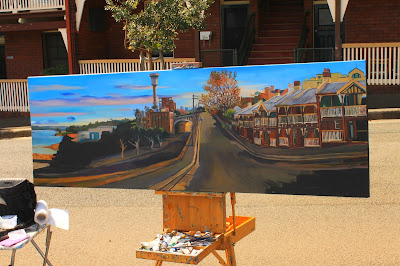
Starting a small painting of an anvil,
one of the blacksmith's
basic tools of the trade
" Anvil" 2014 31 x 31cm oil on canvas
Enquiries
At the ATP community heritage days on the 16th and 17th May, I had 2 exhibitions, one in Bay 1 and 2 of the Blacksmith's workshop and the other in the carriage displayed by the volunteers of 3801 limited, as well as painting throughout the blacksmith's demonstrations .
I am still recovering from being seriously injured not long ago, (fractured pelvis) so I had to be extremely careful. I was given a great deal of help by the volunteers and the management of the ATP, who gave me a room to store my paintings and easels, and a trolley to move them. I am truly grateful, as even just walking still causes me a great deal of pain.

" Anvil" 2014
31 x 31cm oil on canvas
Enquiries
This time I kept the paintings fairly small and simple, so as to not put too much pressure on myself, while I'm still recuperating.
However, I have always meant to paint some of the heritage tools anyway. I have previously painted anvils as part of a larger, more complex painting, but it is a beautiful and evocative item in its own right.

Enquiries
I had often painted Chris before in a variety of poses, but you have to be fast!
However, after I watch for a while I notice various stages of the process, and get a feeling for the timing and rhythm.
It's hard to decide on which of the hundreds of potential poses to choose to paint. I leave the arms in an unfinished state, as I can't decide on whether to paint him wielding a hammer or a pair of tongs.
Decisions, decisions.

Starting a painting of the blacksmith Chris.
The blacksmiths of "Wrought Artworks" move quickly.
"Strike while the iron is hot" isn't just an old proverb - it's a way of life.
They must strike quickly, decisively and with force, however their movements must be controlled and accurate as well.
They also must work as a team and have awareness of who and what is around them.

Chris quenching chisels
2011-12 oil on canvas 152 x 122cm
Enquiries
I exhibited some of my paintings of the Blacksmiths in a corner of their workshop, so that onlookers could compare the paintings with the real thing.

"Blacksmith" 2009 oil on canvas 100 x 75cm
Enquiries
It gave viewers an opportunity to see parts of the workshop not visible to the public due to safety concerns.

Enquiries
i displayed some of my smaller paintings and books of photos of paintings of other areas of industrial Sydney on a pair of old dusty workbenches.

Enquiries
The ATP has largely retained the old industrial ambience of the Eveleigh Railway Workshops.
All Fired up -the Blacksmiths
Eveleigh Railway Workshops"
2012 oil on canvas 91x 122cm
Enquiries
Some more of my paintings of the blacksmiths were exhibited in front of an old signal box.
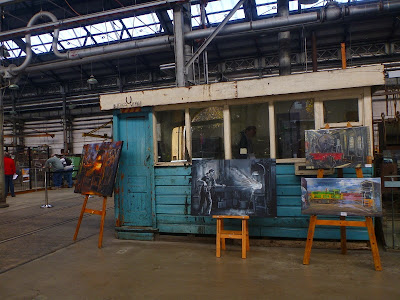
Enquiries
The visitors on the first day were mostly retired former Eveleigh workers.

However, there was a much larger and more diverse group of people attending on the Saturday.
I hope there will be another heritage day next year.
Related posts
Macdonaldtown - A Station without a suburb
ATP Open Day - Saturday, 25 Feb 2012
Singing the body electric (sydney-eye.blogspot.com)
The village smithy (sydney-eye.blogspot.com)
En plein air with street cred (sydney-eye.blogspot.com)
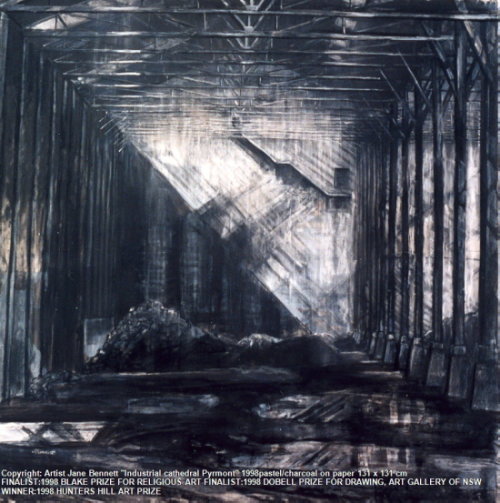

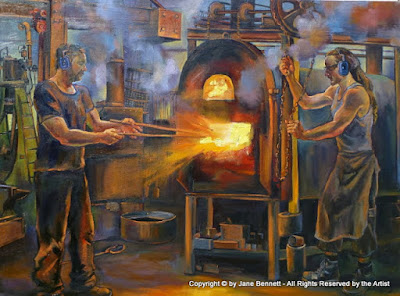
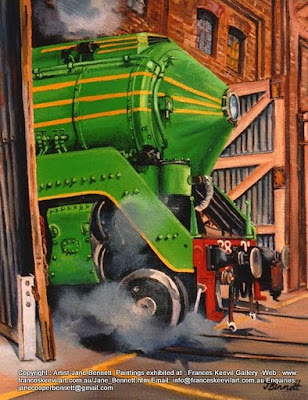


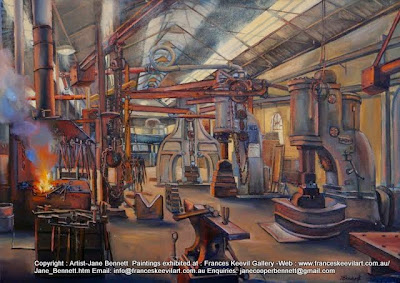
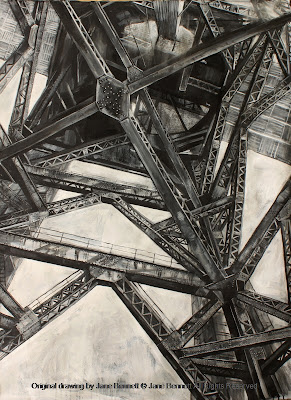


.JPG)
.JPG)
